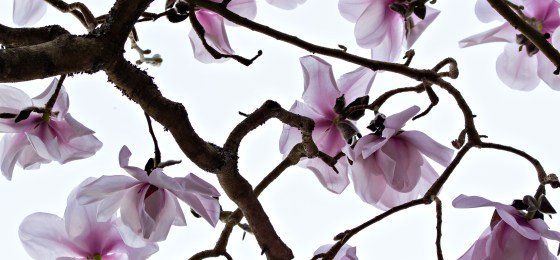
Half of the world’s Magnolia are threatened with extinction
The latest Red List to be published under the Global Tree Assessment shows that half of all Magnolia species are threatened with extinction in the wild. To find such a high proportion of threatened species in such a well-known and widely cultivated plant family is alarming, and signals the need for more concerted conservation action to protect these valuable trees.
The Red List of Magnoliaceae presents conservation assessments conducted by experts for 304 wild magnolia species from around the world. The assessments have been carried out using the IUCN Red List Categories and Criteria, an internationally recognised and widely used system for classifying species at risk of extinction. These assessments reveal that nearly half (48%) of the Magnolia species assessed are threatened with extinction in the wild.
Magnolia are principally threatened by logging activity, with habitat loss due to land conversion to agriculture and livestock farming also a significant factor in their global decline. Other threats include collection of wild plant material and impacts of climate change. “Magnolias are an ancient group of trees that have survived epochs of global change. Now we stand to lose half of all species unless we take action to prevent extinction,” says Sara Oldfield, Co-Chair of the IUCN/SSC Global Tree Specialist Group and co-author of this report.
Magnolia yarumalensis, Endangered. This Colombian magnolia is targeted for its timber. Credit: Marcela Serna
As well as identifying Magnolia species threatened with extinction, the report also highlights that almost one third of Magnolias are still too poorly known for it to be possible to make a conservation assessment. This includes M. liliiflora, one of the species used by horticulturists to produce hybrids such as the popular and widely cultivated saucer magnolia (Magnolia × soulangeana). “We are fortunate Magnolia captures interests of scientists and gardeners alike, but the red listing process is critical for providing a global, comprehensive assessment,” says Gary Knox, President of the Magnolia Society International. “By highlighting threatened species, the Red List enables scientists and supporters to focus on gaining knowledge about and strategically protecting these species both in and ex situ.“
The report also surveys how many Magnolia species are found in botanic gardens, arboreta and seed banks. These ex situ collections are a vital safeguard in the event that wild populations of a species become extinct, and can be used for conservation research and to propagate seedlings for planting back out in the wild. While the results of this survey indicate that considerable progress has been made in recent years, still less than half (43%) of threatened magnolia species are represented in ex situ collections.
The Red List of Magnoliaceae aims to stimulate conservation action for Magnolia highlighted as under threat. The Global Trees Campaign is currently supporting nine Magnolia conservation projects in China and the Neotropics, the two global hotspots for magnolias where the majority of threatened species are found. In partnership with in-country experts and conservationists, GTC is carrying out field surveys, advocating for creation of protected areas, engaging with local communities to raise awareness of the threats to wild magnolia species, and establishing ex situ collections in botanic gardens.
Magnolia longipedunculata, Critically Endangered. Only 11 individuals are known to survive in the wild, and the species is the subject of a restoration project coordinated by GTC and partners at South China Botanic Garden. Credit: Yang Keming
“This report highlights the fact that even for a well-known and widely cultivated plant group such as the magnolias, we can’t be complacent, “ says Paul Smith, BGCI’s Secretary General. “It also shows the importance of red list assessments. Now we know which species are threatened in the wild, we can instigate measures to ensure that they don’t become extinct.”
The Red List of Magnoliaceae is the latest in a series of Red Lists of tree species published as part of the Global Tree Assessment, an initiative led by BGCI and the IUCN/SSC Global Tree Specialist Group. The Global Tree Assessment aims to assess the conservation status of all tree species by 2020, in order to guide conservation action priorities.